Comics and graphic novels hit the sweet sweet spot between art and literature. Here, Room editors share a few of our favourites.
If you are new to Room, you might not be aware that we publish visual art in all our issues and on our covers (see our Cover Art Contest). We publish and have published photography, paintings, illustrations, collages, and comics by artists who are women, trans*, two-spirited, or genderqueer.
Comics and graphic novels hit the sweet sweet spot between art and literature. As Mariko Tamaki (author of award-winning comics Skim, and This One Summer) told us in a recent interview:
“One of the things that is really popular right now is multiple perspectives in literature where you have a lot of stories that are shifting back and forth, and I think part of that is this desire to get into more than one person’s point of view. Comics allow you to really subtly do those different perspectives without necessarily telling you explicitly what anyone is thinking, just what they’re saying or what they’re doing, which is incredibly valuable I think in storytelling.”
Here, Room editors share a few of our favourites. This is in no way an exhaustive list, so please share yours with us on Twitter and Facebook.
The Outside Circle by Patti LaBoucane-Benson
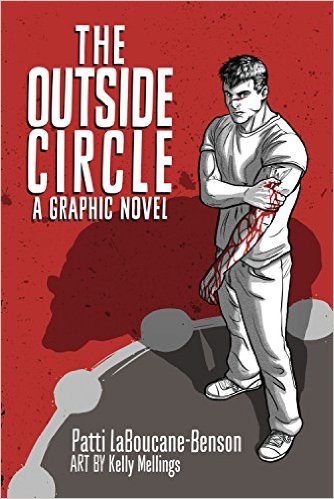 If anyone still doubts that graphic novels can properly deal with “serious” topics, hand them a copy of The Outside Circle. In this heart-wrenching and important debut graphic novel, Patti LaBoucane-Benson—an Indigenous scholar from Alberta—uses the story of fictional brothers, Pete and Joey, to expose the effects of colonialism on Indigenous peoples in Canada. Growing up in Edmonton, Pete and Joey struggle through homelessness, gang violence and the prison system, but, over the course of the novel, gradually learn how to heal from this violence and rebuild their lives. Unlike much of what I tend to read,The Outside Circle focuses on masculinity and men as opposed to women; yet, here gender is understood as relational—as Pete learns, part of the reason Indigenous men are struggling is because colonialism has forced them to forget the centrality of women in society. —Arielle Spence
If anyone still doubts that graphic novels can properly deal with “serious” topics, hand them a copy of The Outside Circle. In this heart-wrenching and important debut graphic novel, Patti LaBoucane-Benson—an Indigenous scholar from Alberta—uses the story of fictional brothers, Pete and Joey, to expose the effects of colonialism on Indigenous peoples in Canada. Growing up in Edmonton, Pete and Joey struggle through homelessness, gang violence and the prison system, but, over the course of the novel, gradually learn how to heal from this violence and rebuild their lives. Unlike much of what I tend to read,The Outside Circle focuses on masculinity and men as opposed to women; yet, here gender is understood as relational—as Pete learns, part of the reason Indigenous men are struggling is because colonialism has forced them to forget the centrality of women in society. —Arielle Spence
Hyperbole and a Half by Allie Brosh
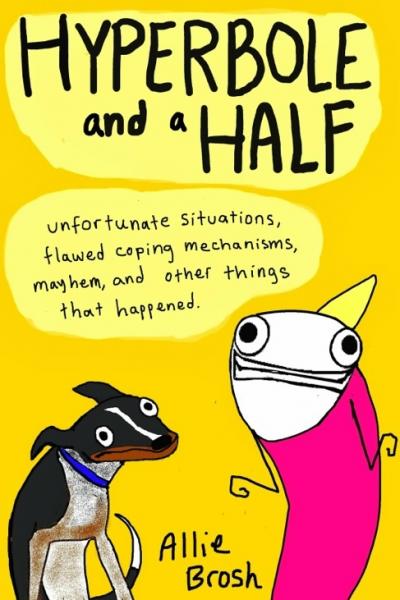 Allie Brosh skyrocketed to viral internet fame in 2009 with her hilarious blog / web comic Hyperbole and a Half. If you haven’t read it yet, click that link, and you’re welcome. She might be one of the funniest cartoonists on the internet (good god, is she ever funny), but it’s her two-part series on depression—which were published months apart after a long hiatus—that really deserves attention (Part 1 / Part 2). Whether you know someone who has suffered from depression, or have experienced it personally, this is one of the most wonderful, healing, brutally honest and insightful reads on the subject I have ever encountered. —Meghan Bell
Allie Brosh skyrocketed to viral internet fame in 2009 with her hilarious blog / web comic Hyperbole and a Half. If you haven’t read it yet, click that link, and you’re welcome. She might be one of the funniest cartoonists on the internet (good god, is she ever funny), but it’s her two-part series on depression—which were published months apart after a long hiatus—that really deserves attention (Part 1 / Part 2). Whether you know someone who has suffered from depression, or have experienced it personally, this is one of the most wonderful, healing, brutally honest and insightful reads on the subject I have ever encountered. —Meghan Bell
 SuperMutant Magic Academy by Jillian Tamaki
SuperMutant Magic Academy by Jillian Tamaki
Jillian Tamaki’s hormone-heavy collection about the lives of teenage mutants at a magical academy is wonderful, and funny, and occasionally heartbreaking. She touches on themes of feminism, queer identity, artistic identity, existential angst, strange and impractical supernatural powers, and so much more (this comic is all of us at sixteen). I’ve loved Tamaki’s artwork for ages, but this collection proves that she’s an equally amazing writer. Essential reading for anyone who has ever been a teenager. —Meghan Bell
Skim by Mariko Tamaki and Jillian Tamaki
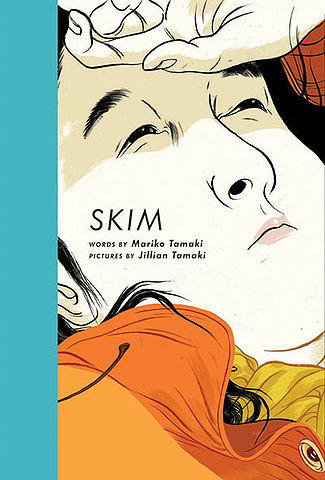 I love Skim, a collaboration between cousins Mariko Tamaki and Jillian Tamaki. The title character is grade 10 student Kimberly Keiko Cameron, an artist and aspiring teen witch who skirts around the margins of high school with her best friend, Lisa. As the school whips itself into hysteria over a jock’s suicide, Skim harbours an intense crush on her art teacher, Mrs. Hornet. Mariko Tamaki injects humour and sensitivity into Skim and her classmates’ navigation of queer identity, mental illness, grief, and social isolation. Illustrator Jillian Tamaki’s beautiful, moody pen and ink drawings evoke Skim’s adolescent angst, often using cinematic framing. Skim is a comic I’ll return to again and again. —Alissa McArthur
I love Skim, a collaboration between cousins Mariko Tamaki and Jillian Tamaki. The title character is grade 10 student Kimberly Keiko Cameron, an artist and aspiring teen witch who skirts around the margins of high school with her best friend, Lisa. As the school whips itself into hysteria over a jock’s suicide, Skim harbours an intense crush on her art teacher, Mrs. Hornet. Mariko Tamaki injects humour and sensitivity into Skim and her classmates’ navigation of queer identity, mental illness, grief, and social isolation. Illustrator Jillian Tamaki’s beautiful, moody pen and ink drawings evoke Skim’s adolescent angst, often using cinematic framing. Skim is a comic I’ll return to again and again. —Alissa McArthur
(Check out this CBC interview with Mariko and Jillian.)
Persepolis by Marjane Satrapi
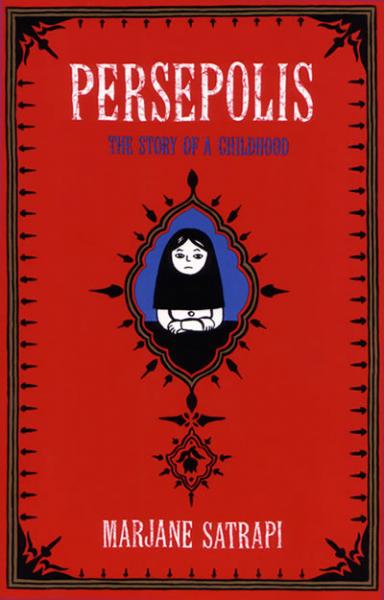 Marjane Satrapi’s Persepolis is an autobiography told matter-of-factly woven with tenderness and thoughtfulness. Delicately drawn by the author herself, Persepolis is a coming of age story that follows a young Satrapi through the Islamic Revolution and into adulthood in France. Touching on topics like puberty and relationships, Satrapi beautifully illustrates the ways in which we all deal with the same things no matter our setting. At the same time, Satrapi is careful to pull the curtain back and show without hesitation the effects of the Islamic Revolution on her family and others around her. Persepolis is an important read as the vibrant imagery brings Satrapi’s experiences growing up as an Iranian woman to the forefront but also gives an inside look to what it means to grow up during a revolution—especially as a free-thinking, rebellious young woman like Marjane Satrapi. —Nav Nagra
Marjane Satrapi’s Persepolis is an autobiography told matter-of-factly woven with tenderness and thoughtfulness. Delicately drawn by the author herself, Persepolis is a coming of age story that follows a young Satrapi through the Islamic Revolution and into adulthood in France. Touching on topics like puberty and relationships, Satrapi beautifully illustrates the ways in which we all deal with the same things no matter our setting. At the same time, Satrapi is careful to pull the curtain back and show without hesitation the effects of the Islamic Revolution on her family and others around her. Persepolis is an important read as the vibrant imagery brings Satrapi’s experiences growing up as an Iranian woman to the forefront but also gives an inside look to what it means to grow up during a revolution—especially as a free-thinking, rebellious young woman like Marjane Satrapi. —Nav Nagra
Bitch Planet, Vol. 1: Extraordinary Machine TP written by Kelly Sue DeConnick, art by Valentine De Landro and Robert Wilson
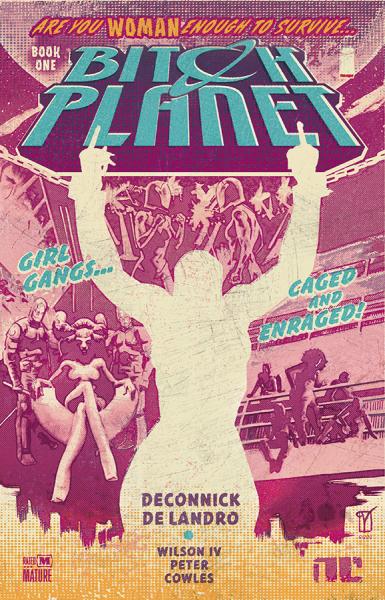 Parodying exploitation films, Kelly Sue DeConnick, Eisner-nominated writer, creates a sci-fi dystopian world where non-compliant women are sent off to Bitch Planet, or as the men in power (“Fathers”) so tenderly call it—the Auxiliary Compliance Outpost. The story follows the imprisoned N.C.s (non-compliants), a diverse cast of WoC, as they try to survive on Bitch Planet under the hyper patriarchal regime by refusing their roles as subservient second class citizen. Although the story focuses on the emerging revolt of the prisoners, my favourite portion of the comic is the retro-style mail order ad at the end of each single issue. Readers can find gems like an ad for X-ray Specs that are “The Perfect Way to See Through His Intentions”, and other products such as—wait for it—“Niagra”. Unapologetically feminist and deliciously self-aware, Bitch Planet is part Octavia Butler, part Orange is the New Black and part Mad Max. An absolutely wild ride. The first volume, which collects the first five issues, will be out early October. —Kayi Wong
Parodying exploitation films, Kelly Sue DeConnick, Eisner-nominated writer, creates a sci-fi dystopian world where non-compliant women are sent off to Bitch Planet, or as the men in power (“Fathers”) so tenderly call it—the Auxiliary Compliance Outpost. The story follows the imprisoned N.C.s (non-compliants), a diverse cast of WoC, as they try to survive on Bitch Planet under the hyper patriarchal regime by refusing their roles as subservient second class citizen. Although the story focuses on the emerging revolt of the prisoners, my favourite portion of the comic is the retro-style mail order ad at the end of each single issue. Readers can find gems like an ad for X-ray Specs that are “The Perfect Way to See Through His Intentions”, and other products such as—wait for it—“Niagra”. Unapologetically feminist and deliciously self-aware, Bitch Planet is part Octavia Butler, part Orange is the New Black and part Mad Max. An absolutely wild ride. The first volume, which collects the first five issues, will be out early October. —Kayi Wong
For Better or For Worse by Lynn Johnston
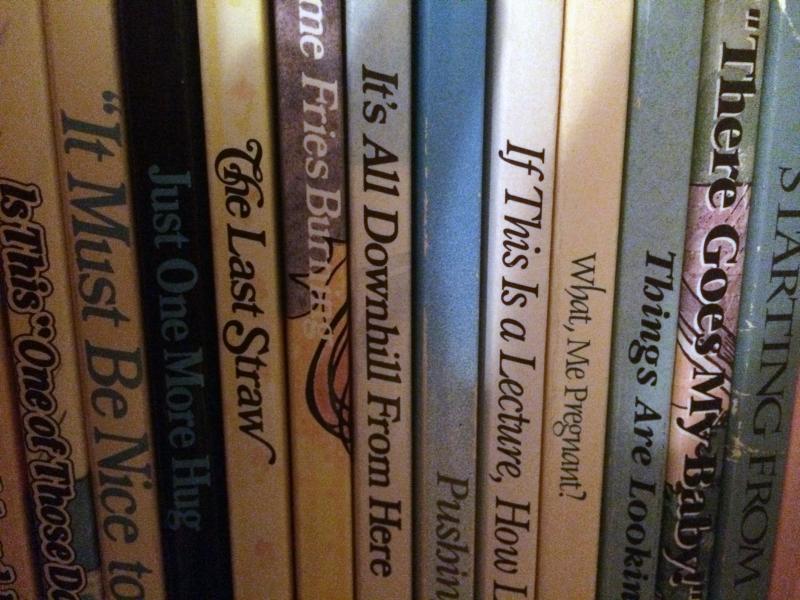 Something that everyone who has been in my apartment knows about me: I have a bookshelf dedicated to newspaper comics, including every single For Better or for Worse collection. I’ve had a few people give me a hard time about the For Better or for Worse (criticisms seem to centre around the fact that some do not find the strip funny). But you know what? This is one of my favourite comics. However, I will concede that Lynn Johnston’s brilliance was not necessarily best served by the newspaper medium. Reading full collections—or all thirty years of the strip at once—lets you appreciate Johnston’s storytelling, character development, and supernatural ability to slowly age characters in a way that one-strip-per-day could never allow. This is the comics equivalent of an enormous hug from someone you love. —Meghan Bell
Something that everyone who has been in my apartment knows about me: I have a bookshelf dedicated to newspaper comics, including every single For Better or for Worse collection. I’ve had a few people give me a hard time about the For Better or for Worse (criticisms seem to centre around the fact that some do not find the strip funny). But you know what? This is one of my favourite comics. However, I will concede that Lynn Johnston’s brilliance was not necessarily best served by the newspaper medium. Reading full collections—or all thirty years of the strip at once—lets you appreciate Johnston’s storytelling, character development, and supernatural ability to slowly age characters in a way that one-strip-per-day could never allow. This is the comics equivalent of an enormous hug from someone you love. —Meghan Bell

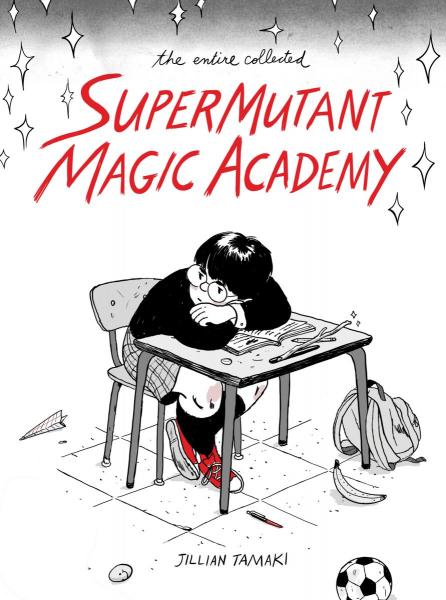 SuperMutant Magic Academy by Jillian Tamaki
SuperMutant Magic Academy by Jillian Tamaki












